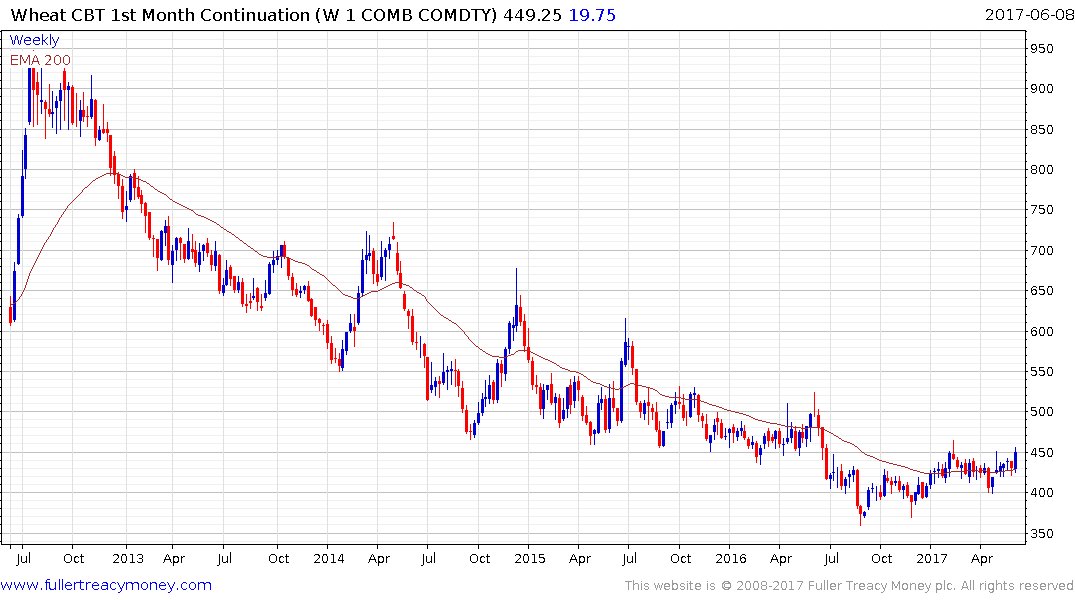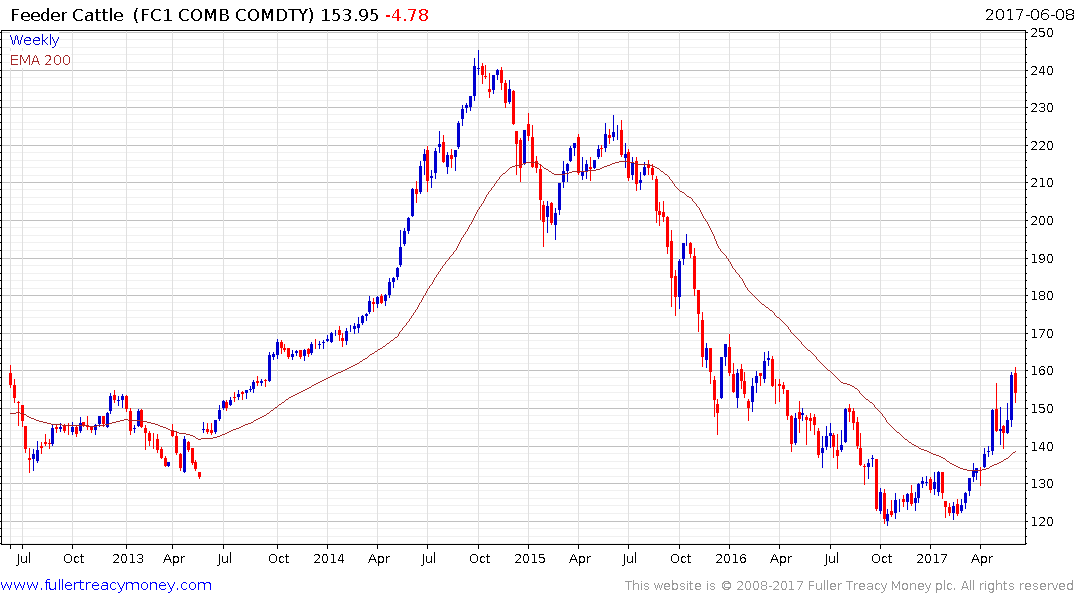Veggie Burgers Go Mainstream with Bloody Impossible Burger
This article by Jen Skerritt and Deena Shanker for Bloomberg may be of interest to subscribers. Here is a section:
While alternatives to meat won’t replace the real thing, more companies are investing in the industry and reformulating recipes so consumers can’t tell the difference, said Kenneth Shea, a food analyst at Bloomberg Intelligence in Skillman, New Jersey.
“Consumers, more and more, think in terms of sustainability,” Shea said. “They’re looking to eat more plants as opposed to red meat due to the perceived health benefits.”
While most consumers want to keep eating meat, they’re becoming more informed about the consequences on the environment and sustainability. It takes about 15,000 liters (3,963 gallons) of water to produce 1 kilogram (2.2 pounds) of beef, compared with 1,600 liters for a kilo of wheat, according to estimates from the Water Footprint Network.
“Clean meat” production requires far less land and water than conventional meat, requires no antibiotics, and eliminates the environmental repercussions of animal waste and contamination during runoff, according to a report from Washington-based non-profit The Good Food Institute.
Still, most Americans don’t want to sacrifice taste.“They’re hungry for a solution,” Beyond Meat’s Brown said. “It’s up to science and our efforts to get it to the point where it’s completely indistinguishable from its animal equivalent.”
I was flying back from a meeting in Las Vegas a couple of months ago when I overheard a conversation between two young men sitting next to me. The first was advising the second on what he needed to do in order to fit into Los Angeles’ culture. The advice was clear, become a vegan, after all that is what all the girls are doing. That also gels with the increased demand for vegan leather handbags (read embossed PVC) which the up and coming generation regard as more eco-friendly.
The report I posted yesterday on agriculturals highlighted increased planting of pulses and plant proteins like beans. It attributed the demand growth to higher Indian standards of living. However there is also an additional growth trajectory from the evolving market for veggie protein from the growth in veganism. Meanwhile the market for veggie burgers or synthesised meat products represents an additional growth option assuming they can ensure the consistency and taste approximate animal products.
If more acreage is devoted to non-traditional crops then the amount allocated to futures traded commodities would necessarily decline. That could act as a catalyst for recovery in commodities like corn, wheat and soybeans or at the very least contribute to a tighter market which would be more susceptible to weather events.

Wheat has rallied to test the upper side of a four-month range and a clear downward dynamic would be required to check potential for a successful upward break.

Feeder Cattle rallied to break a two-year downtrend in February and paused over the last month below $160. A sustained move below the trend mean would be required to question medium-term recovery potential.


